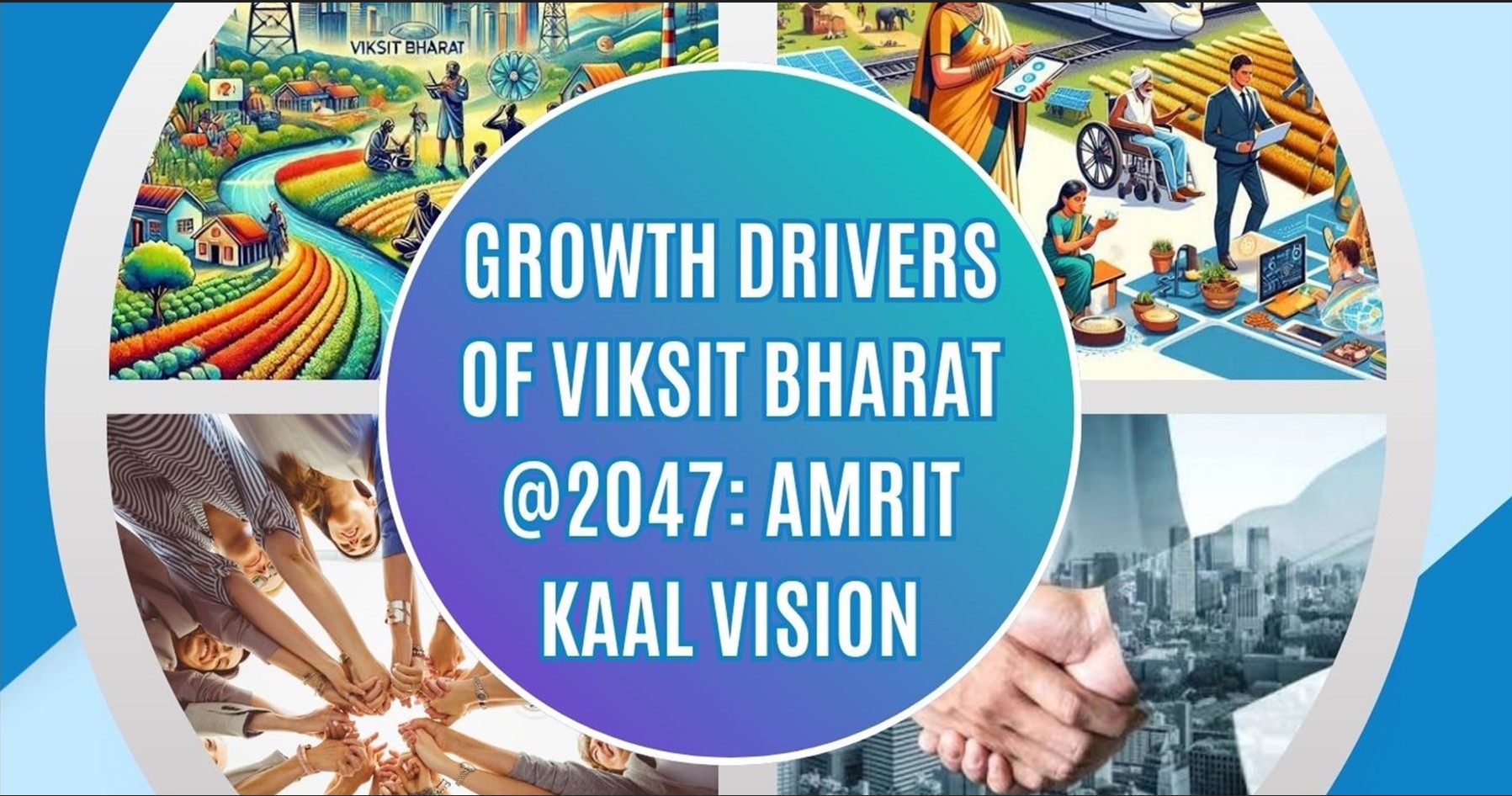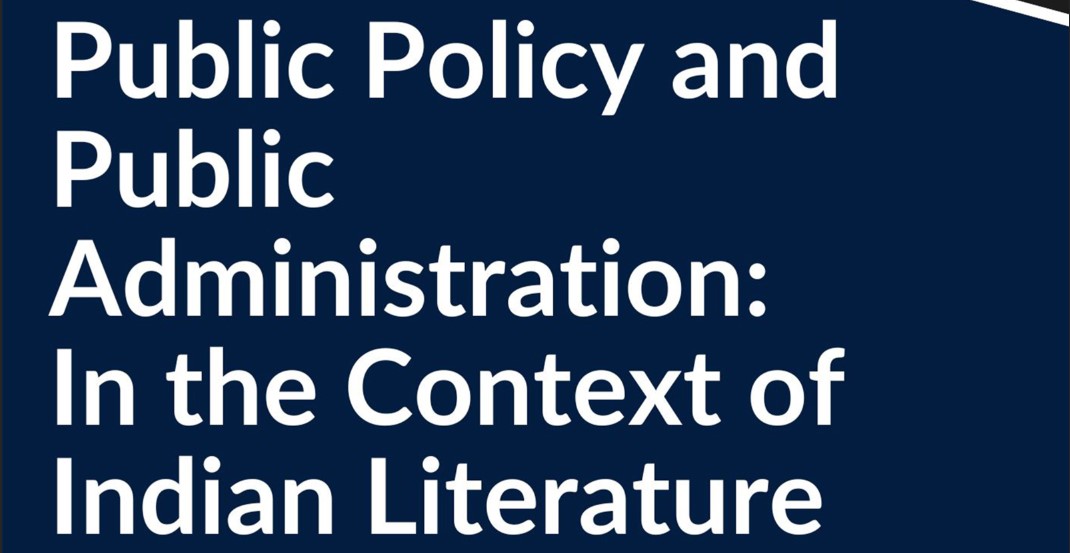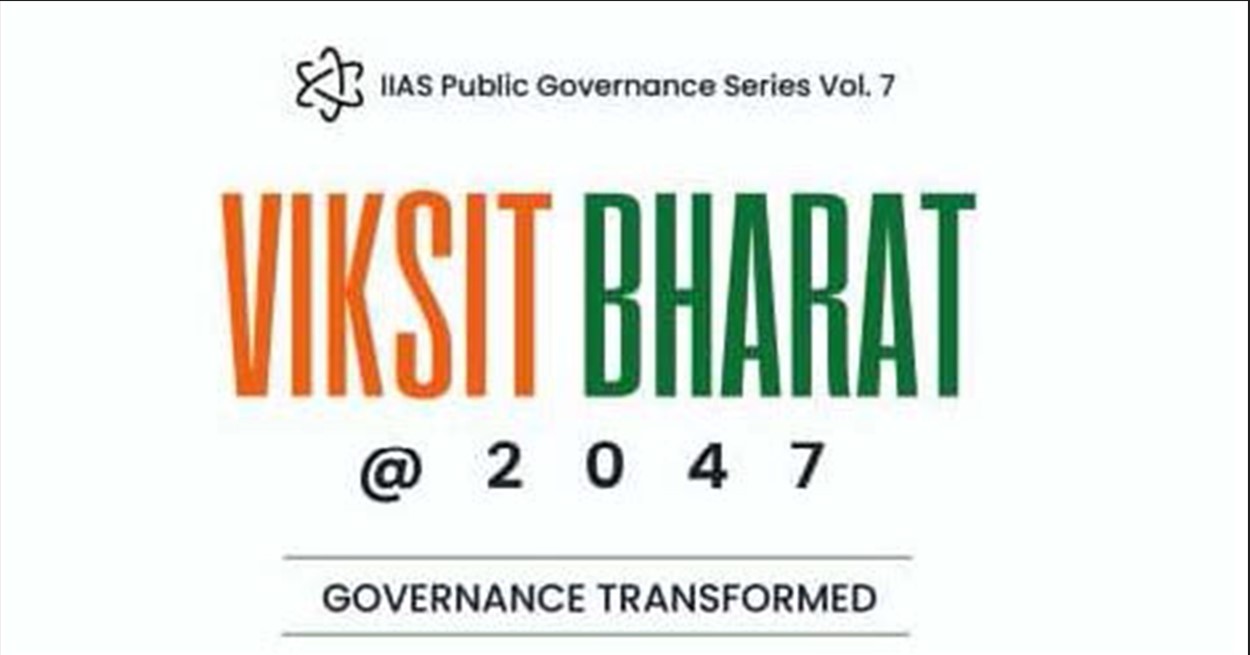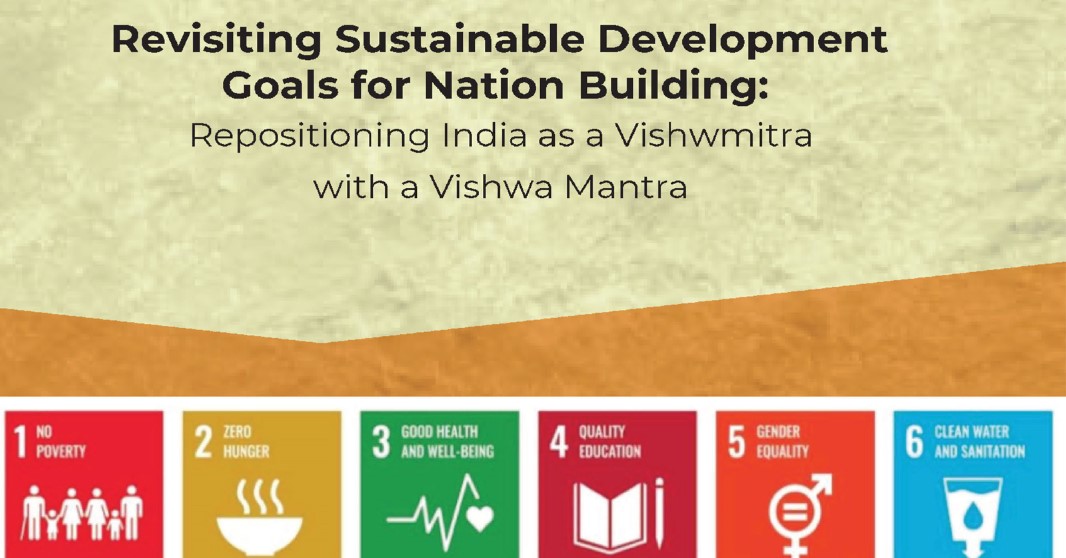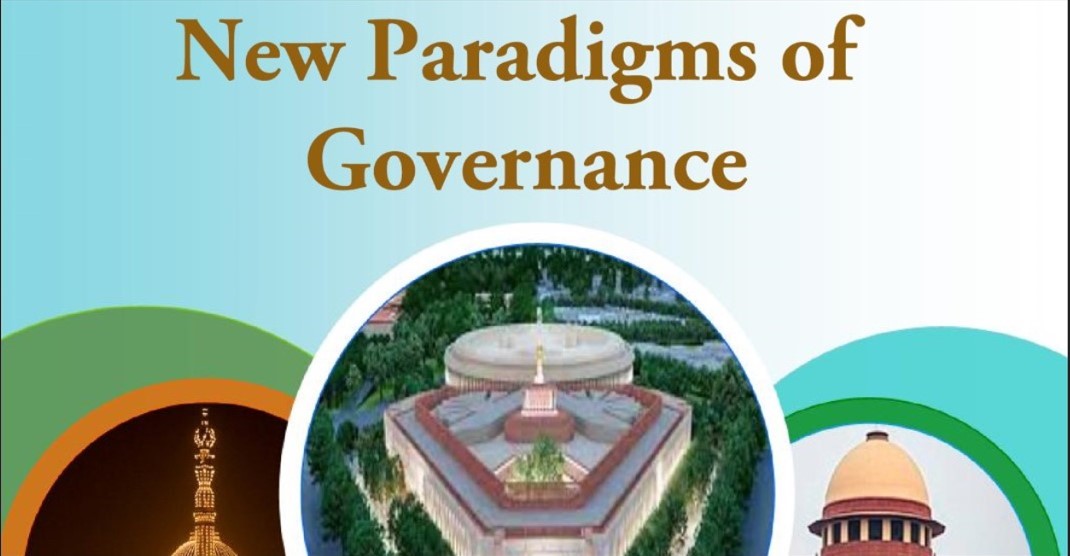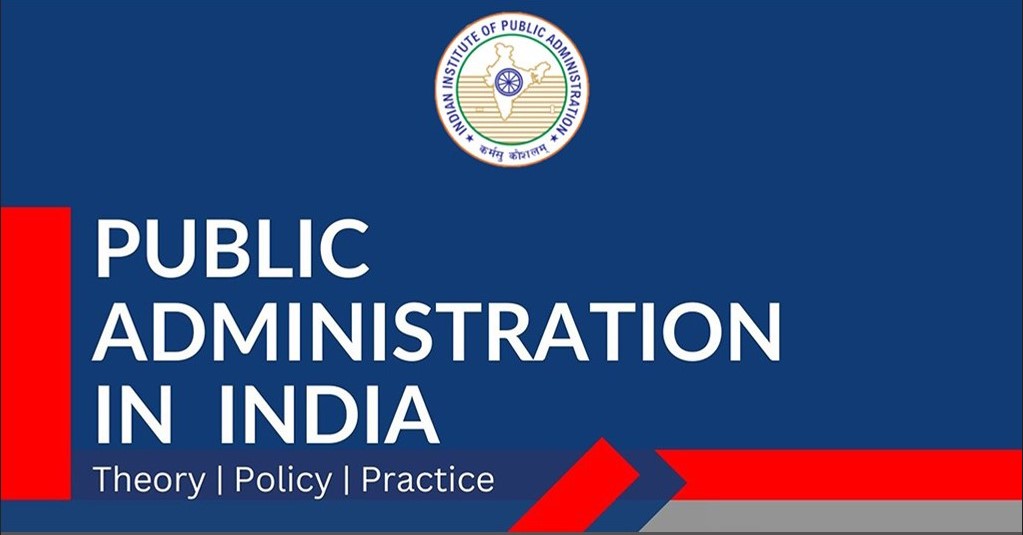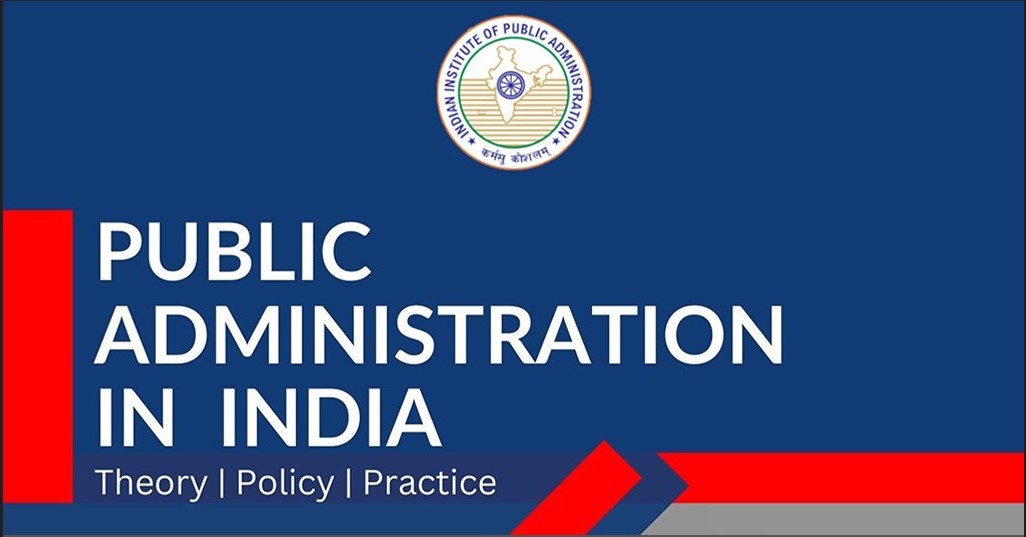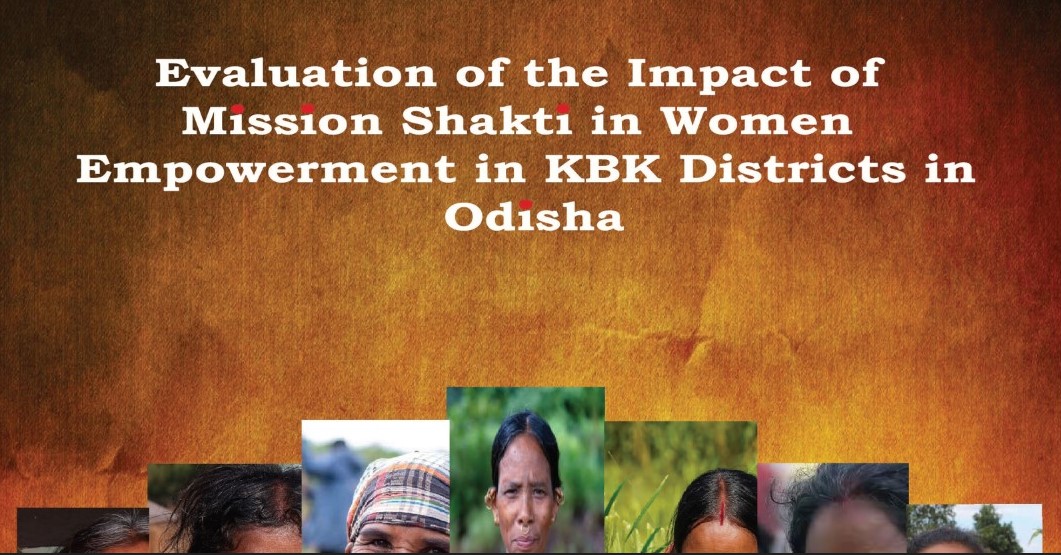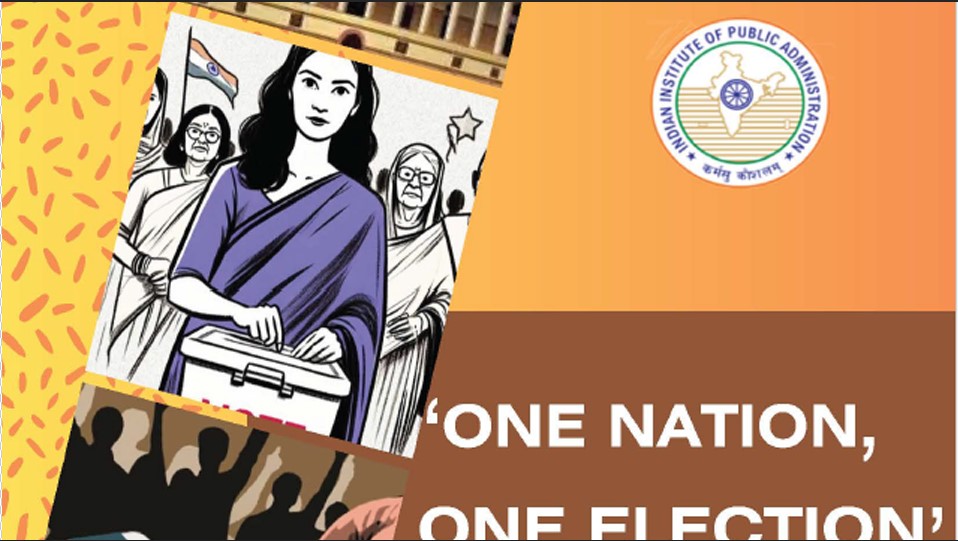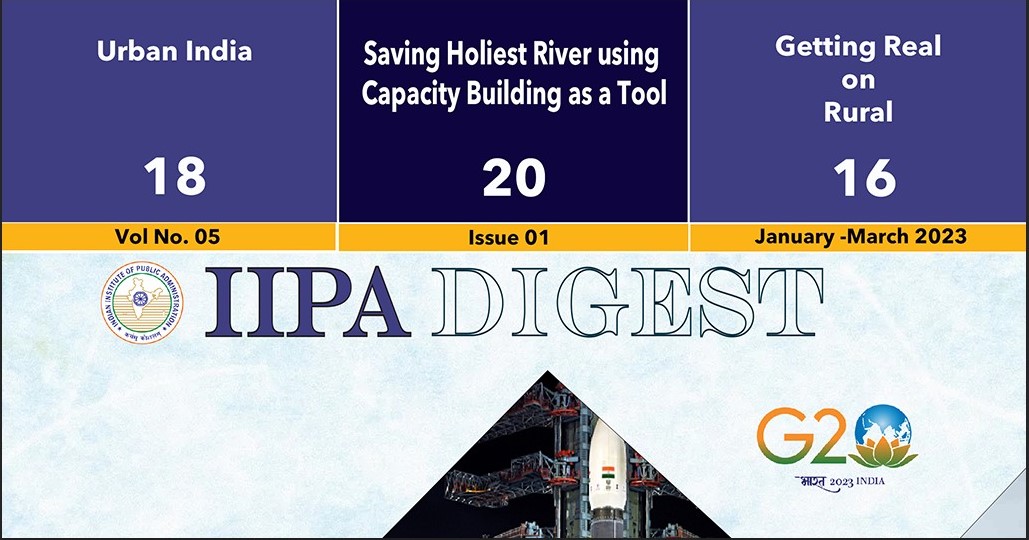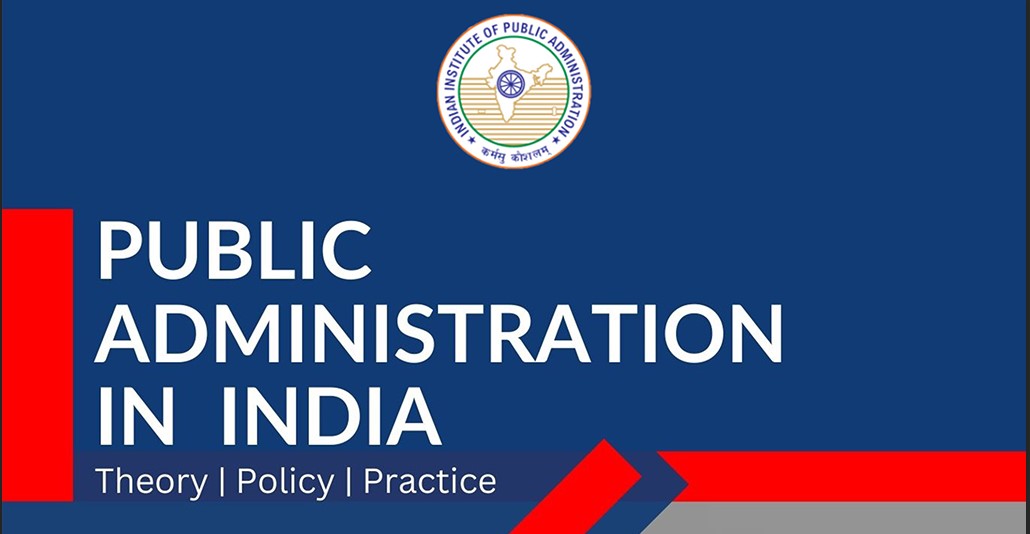Social - Cost-Benefit Analysis of Sewage Waste Water Treatment Plants
Abstract
The objective of the study is to analyse the socio-economic impact of the two sewage treatment plants using Cost-Benefit Analysis to compare the costs and benefits of the two plants. The aim is to comprehend the economic, health, environmental, and ecological impact of these sewage treatment plants. Based on the data collected, the benefits such as social, economic, environmental and ecological have been analyzed in the study along with the total cost comprising of fixed costs such as construction cost and cost of land and operating costs consisting of the maintenance cost, cost of electricity consumption, cost of chemicals used and manpower employed, the cost involved in the dumping of manure. The study reveals that the benefits remain underestimated in both plants and suggests several policy implications, such as more efficient utilisation of effluents, non-drinking water, and sludge. The role of clean and renewable energy is highlighted by identifying the potential for electricity generation through a biogas plant and a stand-alone solar plant. Thus, the electricity generated will not only be used by the sewage treatment plant but can also feed the excess electricity generated to the main grid.
Keywords: Sewage wastewater treatment plant, socio-economic impact, cost-benefit analysis, biogas plant, sludge, stand-alone solar plant.
1. Introduction
Clean water is essential for life. Water holds the socio-economic aspect of living. All the developing countries in the world are trapped in excessive population growth while they are already challenged by a multitude of socio-economic problems such as unemployment, lack of capital, scarcity of safe drinking water, and other amenities. Moreover, the increased process of urbanization has resulted in the scarcity of clean drinking water available for drinking, cleaning, and cooking purposes.
Miller [1] contended that communities across the world face water supply crises due to increasing demand, drought, depletion and contamination of groundwater, and dependence on single sources of supply. This emerging water supply challenge can be resolved through water reclamation, recycling and reuse, and creating new sources of high-quality water supplies. Bixio et al.[2] asserted that in the last two decades, Europe had witnessed acute crises both in terms of water scarcity and quality deterioration, due to which water reuse and water reclamation technologies have become a central focus of all policies. Salgot [3] argued that wastewater reuse is not widely applied in European countries owing to various reasons such as a lack of full knowledge of the hazardous consequences associated, a lack of the precautionary principle, difficulties in the assessment of reclaimed real quality, etc.
In this era of water crises, sewage treatment plants (STPs) hold substantial relevance. Sewage treatment of water involves three stages: primary, secondary, and tertiary. The primary treatment consists of holding the sewage in the basin where solids can settle down to the bottom, while oil, grease, and lighter solids float on the surface. The settled and floating materials are removed. The secondary treatment requires a separation process to remove microorganisms from treated water. Finally, tertiary treatment is defined as the treatment that disinfects chemically and physically by lagoons and microfiltration. Under such circumstances, water must be recycled; therefore, planned water reuse is gradually becoming extremely important. Recycling or reuse of water requires a cost-effective and efficient way of treating the increasing quantity of discharge of sewage effluent discharge into the surface water. The treated wastewater can be used for several purposes, such as agriculture and urban irrigation, industrial uses like cooling, processing, environmental enhancement like wetlands, wildlife refuges, urban lakes, and other activities like firefighting, dust control, toilet flushing, etc. [4].
Bruno et al. [5] concluded that the best configurations are the ones that completely replace the existing system with a trigeneration plant that uses biogas and additional natural gas to meet the heating demands of a sewage treatment plant. Buettner and Noll [6] revealed that biogas production in biogas plants is less complex than the sewage treatment plants of municipal waste. Zhang et al. [7] suggested that carbon neutrality in the sewage treatment plant can be achieved, indicating that the sludge digestion process can produce a lot of biogas for generating electricity. Analyzing energy saving, economic feasibility, and carbon neutrality, the study concludes that the best treatment method is the one that has energy-saving potential by using low-grade waste thermal energy.
Guan and Hubacek [8] deployed the integrated economic–ecological input-output modelling technique to evaluate the quality of water, accounting for the number of water inputs and amount of water contamination in the hydro-ecosystem by the discharged wastewater. The study illustrated that North China requires around 96% of the annual available water to be ineligible for any use. A decentralised system is proposed instead of focusing on end-of-pipe treatment for emission prevention, adopting a general assessment methodology that builds on multi-objective optimisation and sustainability indicators, Balkema et al. [9]. Owen et al. [10] demonstrated the significance of selecting the most suitable membrane and optimum operating conditions. The study compares the cost of the membrane system and conventional treatment processes and suggests that in many cases, membranes are cost-effective. The oxidation ditch process has an advantage over the other advanced systems due to lower energy consumption in sludge production [11]. Kulkarni et al. [12] evaluated the quality of sewage generated from the sewage treatment plant in Mumbai based on Cyclic Activated Sludge Technology, determining whether the effluent discharged into the water body is under limits given by the Mumbai Pollution Control Board.
Montorsi et al.[13] demonstrates that the waste to landfill decreases, improving the environmental impact of the plant significantly, and at the same time, the integrated system can produce 25% of the electric energy required for the plant operation, reducing the payback period of the integrated plant. The efficiency of heavy metal removal by the model was determined by monitoring influent and effluent metal levels over four weeks. The studies have suggested various technologies for sludge treatment, such as the addition of earthworms in sludge-treatment wetlands [14]. Sodhia et al. [15] proposed a maintenance metabolism-based upgraded activated sludge, restricting excess sludge generation.
Sewage treatment plants (STPs) are associated with numerous positive externalities in terms of health, environmental, and ecological benefits. The positive externality in terms of health is observed in the form of a reduction in the burden of disease owing to the reduced drinking water quality. Wastewater is responsible for several health hazards, such as fevers, diarrhoea, and sores on the hands and legs of farmers and labourers exposed to domestic wastewater [16]. Carr et al. [17] reported a 36 per cent increase in enlarged livers and a 100 per cent increase in both cancer and congenital malformation rates in China compared to control areas where industrial wastewater was not used for irrigation. The medical cost associated with drinking unsafe water has been captured by [18]. The indirect health cost pertains to the loss of productivity from illness or loss of life. Wilking and Jonsson [19] estimated the indirect cost of absenteeism in the German workplace due to cancer, excluding premature mortality costs. Bradley et al. [20] calculate expected lifetime earnings that would have been earned if the disease could have been avoided.
Environmental benefits are in terms of improving the water quality and increasing the quantity of water available for usage by society. The study by Molinos-Senante et al. [21] is a pioneering work using a sample of 43 wastewater treatment plants in Spain. The study estimated the shadow prices of five indicators of water quality: nitrogen (N), phosphorus (P), suspended solids (SS), biological oxygen demand (BOD), and chemical oxygen demand (COD). The other positive externality is the ecological benefit perceived from the wastewater treatment plants, as the project sites of these plants sustain large biodiversity. Biodiversity includes a large portion of the green belt created by the project site of the wastewater treatment plant, sustaining a variety of plants and animal species. These plants also result in a safe habitat for water life.
R Lim et al. [22] studied the synthesis of distributed wastewater treatment plants to reduce capital and operating costs associated with the process. The study evaluated both environmental and economic feasibility using life cycle assessment (LCA) and life cycle costing (LCC) methods. Molinos-Senante et al. [23] argued that water resource management should be made from a multidisciplinary perspective. Incorporating economic research into the design and implementation of policies will lead to efficient results. The study stated that the cost-benefit analysis (CBA) is one of the most widely accepted economic instruments. Apart from economic benefits wastewater treatment process has significant associated environmental benefits. Molinos-Senante et al. [24] stated that phosphorus recovery from wastewater had become a necessity for sustainable development since it is a non-renewable essential resource associated with serious environmental impacts. It is also asserted that there are no economic incentives for the implementation of phosphorus recovery technologies because the selling price of rock phosphorus is lower than phosphorus recovered from sewage. Balkema et al. [25] asserted that instead of focusing on end-of-pipe treatment for emission prevention, the focus must be shifted towards optimal resource utilisation, favouring the decentralized system
India, being the fastest-growing country in the world, also faces the challenge of the availability of usable water. Delhi, the national capital, has been consistently facing crises of usable and safe drinking water. Population growth, growth of slums, and migration resulted in inadequate water supply and sanitation services. Further, deficient rainfall and an extremely warm climate also created a water shortage in the capital. Moreover, there is an extreme requirement for efficient infrastructure with minimum leakage. Both supply-side and demand-side management are needed to rectify the challenges.
Delhi has been observed as one of the fastest-growing cities in India. Due to rapid urbanization, the city has developed a severe problem of untreated sewage [26]. Along with the tremendous urbanization, Delhi has observed rapid population growth, leading to the problem of a lack of infrastructure, water shortage, housing facilities, etc. As a result of this, the availability of basic needs like water supply and sewage system has become a serious issue of concern. The Delhi Jal Board (DJB), constituted under the Delhi Jal Board Act 1998, is responsible for the distribution of drinking water, and its collection, treatment, and disposal of domestic sewage. There are about eleven water treatment plants and twenty-two sewage treatment plants in Delhi to meet the water requirements in all the regions of Delhi. It is extremely crucial to evaluate the treatment process of these plants in terms of a cost-benefit approach, and since water has a socioeconomic impact on society, it is essential to conduct a social cost-benefit analysis to evaluate the performance of these plants. In this context, the present study selects two plants, namely, the Kondli Sewage Treatment plant and the Okhla Sewage Treatment plant, to evaluate them based on the cost-benefit approach. The selected treatment plants are Sewage treatment plants (STPs)
The main objective of the study is to analyze the socioeconomic impact of the two sewage treatment plants in Delhi using Cost-Benefit Analysis, incorporating external benefits, to compare the costs and benefits along with the socio-economic impact of the two plants. The aim is to comprehend the economic, health, environmental, and ecological impact of these sewage treatment plants.
Godfrey et al. [27] undertook a cost-benefit analysis of greywater treatment and reuse systems for residential schools in Madhya Pradesh, India, and greywater was used for toilet flushing and irrigating the food crops. Jin et al. [28] indicate the impact of climate change and socio-economic growth on water quality and river flow, leading to severe implications for people’s livelihood in the deltaic areas. Islam et al. [29] combine the climate change and socio-economic development scenarios to anticipate the water quality of the river, assessing the future consequences for health risks. The socio-economic change will affect the water quality, and climate will alter flows, increasing flood flows, and changing pollution diversion factors in the river confirmed by [30]. Marrero et al. [31] analyze the management of the construction and demolition of waste urbanization projects from both ecological and economic perspectives. The study proposes a new scenario in which the soil is used 100 %, reducing the ecological footprint, and concludes that the traditional model of waste management could be completed with an environmental analysis using the ecological footprint indicator. Raja et al. [32] showed that poor economic conditions force farmers to not only sacrifice their health but also the health of consumers by using wastewater for irrigation. Okotto et al. [33] attempted to quantify the amount of groundwater consumed and identify the socio-economic profile of well owners and consumers.
The objective of the present study is to evaluate the socio-economic, environmental, ecological, and health impact of sewage treatment plants in Delhi. The study selects two plants that deploy the same methodology for the treatment of sewage wastewater. Both the selected sewage treatment plants employ an activated sludge process (aerobic method). This is the most commonly used suspended growth process for municipal treatment. There are various stages involved in this process. The process involves wastewater aeration in the presence of a microbial suspension, and a solid-liquid separation following aeration. The next stage is the discharge of effluent, the wasting of excess biomass. In the activated sludge process, wastewater containing organic matter is aerated in where microorganisms metabolize the suspended and soluble organic matter. The new cells formed in the reaction are removed from the liquid stream in the form of flocculent sludge in settling tanks [34].
The study deploys a social cost-benefit approach to evaluate and compare socio-economic, environmental, and ecological as well as health impacts of the selected plants. The data of both plants is collected based on a questionnaire consisting of relevant information regarding the coverage of treated water supply, indicating the benefits received by the plants, the avoidance of waterborne diseases, etc. Based on the data collected, an assessment related to the benefits, like social, economic, environmental, and ecological, has been made in the study.
The results reveal that employment generated by the Okhla plant is much higher than the Kondli plant. The fixed cost of the Okhla plant is higher than Kondli, and the total area covered by Kondli is much greater than Okhla. The total benefits of Okhla STP exceed the total benefits of Kondli STP by INR 521.52 lakhs per annum, while the costs of Okhla STP exceed the costs of Kondli STP by INR 37,736 lakhs per annum, indicating a huge difference in costs as compared to the benefits. The total benefits highly exceed the operation and maintenance costs in the case of both the plants, and the difference is more in the case of Kondli STP as compared to Okhla STP. This further implies that with lesser costs, Kondli STP can generate larger benefits as compared to Okhla STP. At the same time, there are a lot of benefits unexploited or unutilized by Kondli STP, such as charging the water supply, and the distribution of sludge and biogas.
Within the external benefits, ecological and health benefits are the same for both the plants, but the environmental benefits of Okhla STP are larger than Kondli STP by INR 9.0075 lakhs per annum, owing to a lesser quantity and value being sold for growing agriculture and other uses by Kondli STP. The benefits have been underestimated. There remains a huge potential for enhancing a substantial amount of ecological and economic benefits. The internal benefits derived by the plant can be enhanced substantially by charging the water from the sewage treatment plant for non-drinking purposes, increasing the bio-gas connections covering a larger section of society, and efficiently utilizing the manure in the form of sludge released from the STP. The external benefits can be accounted for and evaluated more efficiently by incorporating the environmental benefit of improved water quality and by computing the altruistic value associated with the biodiversity of unutilised green belts existing in the selected plants.
The study reflects many policy recommendations for utilising the available area of the selected sites for installing solar energy panels, making the plant not only self-sufficient in energy access but also supplying surplus electricity to the main grid. Further, the treatment plants can also be utilised for preserving wildlife and biodiversity. Finally, the treated effluents from the treatment plants in the form of non-drinking water, biogas, and sludge must be economically available for extensive activities such as washing, cleaning, irrigation, gardening, manure, biogas connections, and electricity generated from biogas production during the sewage treatment process.
2. Method
The study evaluates the sewage wastewater treatment methodology used by each sewage treatment plant selected for the study, namely the Okhla sewage treatment plant and the Kondli sewage treatment plant. The methodology employed in Okhla Sewage Treatment Plant (Okhla, STP) and Kondli Sewage Treatment Plant (Kondli, STP) is referred to as the Activated Sludge Process. One of the biggest disadvantages of this process is that it requires additional tertiary treatment to meet the treatment requirements. This activated sludge process also requires a larger area, which poses a greater land requirement. The picture in Figure 1 describes the overall process of a sewage wastewater treatment plant (e-library WCL).
Figure 1: Conventional Activated Sludge Process used in both the Plants
The overall sewage waste from various sources of the city, such as households, industry, and commercial places, is accumulated and enters the sewage treatment plant. The preliminary process is the removal of solid waste or floating material from the sewage with the help of coarse screens for disposal. After removing the solid waste from the direct sewage retrieved from the city, the sewage enters the primary stage of the process of wastewater treatment process. In this primary stage, the sewage is directed to the Primary sedimentation tanks, where the solid matter is settled down in the form of waste sludge or raw sludge, while the rest of the separated sewage enters the secondary stage of the treatment process.
The secondary stage deploys an activated sludge process where the sewage from the primary sedimentation tank finds its way to the activated sludge process. The activated sludge process involves two types of tanks. One is the aeration tank, where the sludge is activated by compressing air or oxygen to activate numerous types of bacteria. The mixed liquor is then sent to the settling tank, where the sludge is again separated from the mixed liquor. This separated activated sludge is again returned to the aeration tank where the compressed air again activates the bacteria. This process is run several times before the treated water from the secondary stage enters the tertiary stage. From the secondary stage, the recycled water that is extracted can be utilized in agricultural landscape reuse or non-food crop irrigation, such as decorative plants, lawns, etc.
After the secondary stage, the recycled water is sent to the tertiary stage of treatment, where disinfection of the water takes place by using chlorine or ultraviolet light (UV). The water is now discharged to the nearest water body. The recycled water at this stage is suitable for non-drinking purposes of both industrial and domestic use, as well as for agricultural reuse. This recycled water can further be used as potable drinking water only after undergoing a process of filtration. The activated sludge process adopted by the selected two plants in Delhi involves various costs and benefits. Moreover, there are numerous externalities associated with the process of wastewater treatment, which can be analysed by deploying various methods. The study adopts the cost-benefit approach to analyse and compare the costs and benefits, as well as the socio-economic implications of the process of the wastewater treatment process.
Cost-benefit approach
A Cost-Benefit Analysis, also called Benefit-Cost Analysis (BCA), is a systematic approach to estimating the strengths and weaknesses of alternatives. It is a systematic process for calculating and comparing the benefits and costs of a decision, policy, or project. Cost-benefit analysis (CBA) is a relatively simple and common technique for decision-making concerning an attempt to make a change. Costs are incurred altogether, or they might be incurred gradually, but benefits are reaped after a period. These costs are computed by selecting the appropriate variable and indicators, which are obtained from both the online data source and the questionnaire's primary source. Various types of costs are assimilated in Table A1. Apart from the variety of costs, various benefits are obtained from the wastewater treatment process. Benefits are the positive returns accrued from the treatment plants in terms of positive externalities in the form of environmental benefits and health benefits. Total benefits are further divided into internal and external benefits. These benefits are computed by selecting the appropriate variable and indicators obtained from the online data source and the primary source of the questionnaire. Various types of internal benefits are assimilated in Table A2. External benefits derived from the sewage treatment plants are of different types, as discussed. Different types of external benefits can be measured by adopting appropriate indicators. The study adopts specific indicators to evaluate and measure various types of external benefits. The selected indicators and their respective sources have been compiled in Table A3 and Table A4.
Apart from infrastructure and environmental benefits, there are ecological and health benefits that are derived from the sewage treatment plants. The selected indicators for measuring ecological and health benefits are discussed in Table 4. Both internal and external benefits are not directly observed from the functioning of sewage treatment plants. The benefits need to be evaluated, adopting a suitable methodology for their estimation. After selecting the appropriate indicators for both internal and external benefits, the estimation of these indicators is carried out using either the information quoted by the questionnaire or the estimates provided by other studies that have been adopted as a benchmark. Table A 5 discusses the methodology by which each benefit has been evaluated and assigned a monetary value.
Estimating the external benefits is all the more critical as these benefits are not directly observed. These benefits have to be evaluated indirectly by adopting a particular methodology. The computation of Infrastructural and environmental benefits has been exhibited in Table A6. Similarly, the computation of estimates of ecological benefits as well as health benefits is exhibited in Table A7. Apart from evaluating the internal and external benefits, it is equally significant to examine the water quality of sewage treatment plants. Water quality is one of the crucial aspects of the process of a sewage treatment plant. Certain parameters are used for evaluating water quality. The Delhi Pollution Control Committee (DPCC) has defined certain guidelines or limits for these parameters that are used in evaluating water quality.
Measuring the water quality
Improving water quality is the preliminary reason for establishing the sewage treatment plant (STP). Various crucial parameters serve as indicators of the quality of water, such as pH, TSS, BOD, COD, ammonical nitrogen, dissolved phosphates, nitrate-nitrogen, etc. There are certain standards defined by DPCC given in Table A7.
Collection of data
The method of data collection is both primary surveys based on a questionnaire and secondary data in the form of reports of the Delhi Jal Board (DJB) available online. The primary survey was conducted with the help of a team of surveyors who were trained for this purpose. The questionnaire consists of all relevant information about socio-economic, environmental, and ecological as well as health impacts related to the selected STPs in Delhi. The data is collected by interviewing the authorities of sewage treatment plants by making them fill out the questionnaire. An assessment using this method points out the gap between the cost incurred in running the project and the economic benefits derived from the project. The same analysis, when extended to social–cost–benefit, envisages the social benefits one can draw from the project.
3. Results
The study selects two plants based on the technology used for wastewater treatment, namely the activated sludge process (ASP). The data is mainly collected based on the questionnaire by interviewing the officials employed in the
Okhla Sewage Treatment Plant (Okhla STP)
This plant is located in the Okhla region of New Delhi, as shown in Figure 1, exhibiting a total capacity of 170 MGD, which is divided into 5 phases as depicted in Table A7.
Figure 2: Map of Okhla STP Figure 3: Okhla Barrage
Okhla STP, constructed by the Delhi Jal Board, operates with a conventional activated sludge process. It has been constructed for the treatment of wastewater generated in the ring road catchment area in North Delhi, Central Delhi, and part of South Delhi. It has been constructed in six phases with different capacities, respectively, as given in Table A7. This treatment plant receives around 545 mld of sewage. There are around five flow-measuring devices installed in the inlet channels under each phase, but only one is in working condition. Phase IV is currently undergoing the automation process for improvement and modernisation. Phase I is also undergoing a repair process for its mechanical screens. The source of wastewater for Okhla, the sewage treatment plant, is mainly from Sarita Vihar, Maharani Bagh, Trilokpuri, Jamia, Johri Farm, Noor Nagar, Batla House, and other colonies on the bank of the river Yamuna, as shown in Figure 2. The plant is surrounded by industrial and residential areas.
Another feature of this plant is that there is no standby arrangement for running the plant during a power failure or power cut. However, this plant produces biogas, and part of the biogas produced in digesters is recycled for mixing the contents with the help of compressors, and the remaining biogas is supplied to nearby areas through pipelines to be used as domestic fuel gas. The Okhla STP produces, on average, 5 lakh cu.ft. of biogas per day at the STP. This gas is fully utilised in the form of domestic fuel gas through 5000 connections. The sludge thus produced in sludge drying beds is sold as manure.
Okhla STP faces the problem of staff to look after the functioning of the plant. DJB is doing regular sampling and testing of effluent in their departmental lab as well as by DPCC. The treated effluent from the plant meets the standards for BOD and SS, and the treated effluent is distributed to CPWD for horticulture (45.46 mld) and the Department of Irrigation for minor irrigation (13.36 mld), and the rest is discharged to the Agra Canal. A well-designed biogas supply system exists in the areas around Okhla STP. Approximately 1700 lakh cubic feet of biogas were generated from Okhla STP, which was supplied to the residents. DJB can substantially cut down its expenditure on electricity bills by producing electricity from biogas generated at the Okhla plant. Approximately about 5000 residents belonging to areas such as Lajpat Nagar, Taimur Nagar, Okhla Village, Friends’ Colony, Jal Vihar Colony, Nehru Nagar, Taimur Nagar, Okhla Village, Friends’ Colony, Jal Vihar Colony, Nehru Nagar, New Friends Colony, Maharani Bagh, Kalindi Colony, Siddharth Enclave receive biogas supply from Okhla Plant. The commercial consumers include Holy Family Hospital, Don Bosco School, Jamia Millia Islamia University, and the Cheshire Home. (Delhi Jal Board).
Though the installed capacity of Okhla STP is 170 MGD, approximately 113.07 MGD is treated. This underutilization of Okhla STP is largely due to the non-availability of raw sewage for treatment. Owing to the underutilization of the plant, the DJB suffered a loss of INR 6.39 crores on account of the cost of operation and maintenance (O&M) and power generation. As far as the performance of Okhla STP in treating sewage wastewater is concerned, Phase-V exceeds the limits of DPCC in the case of total suspended solids, while the rest of the parameters for measuring water quality are all under limits. The rest of the phases of Okhla STP efficiently treat the sewage wastewater since all the parameters fall under the limits prescribed by DPCC, as given in Table A6.
Kondli Sewage Treatment Plant (Kondli STP)
The plant is situated at Pragati Marg, New Kondli, East Delhi, as shown in Figure 4. The total area covered is 172 acres, and the plant is surrounded by residential areas, commercial complexes, and a highly dense Green Belt. The first plant, Phase I, was established in 1983, followed by Phases II, III, and IV in 2013.
Figure 4: Map of Kondli STP
Figure 5: Settling Tanks at Kondli STP
Delhi Jal Board has constructed Kondli STP based on the conventional activated sludge process with a capacity of 409 mld. It has been constructed in four phases with different capacities, as given in Table A7. It was constructed for the treatment of sewage generated in part of the Trans Yamuna area of East Delhi. In this primary stage, the sewage is directed to the Primary sedimentation tanks, where the solid matter is settled down in the form of waste sludge as shown in Figure 5. The secondary stage deploys an activated sludge process where the sewage from the primary sedimentation tank finds its way to the activated sludge process.
DJB is doing the operation and maintenance of this plant. This STP receives around 205 mld of sewage. The sources of wastewater for this plant mainly pertain to the areas of Patparganj, Swastya Vihar, Preet Vihar, and Laxmi Nagar. This plant is also without any standby arrangement for running the plant during a power cut. Phase I of the plant has its mechanical grit removal mechanism out of order, and also, the phase II digesters, gas holders, and drying beds are not yet commissioned. In the case of Kondli STP, part of the biogas produced in the digesters in phase III of the plant is recycled for mixing the digester contents with the help of compressors. However, there is no gas production in Phases I and II of the plant. The sludge produced in the sludge drying beds is sold for use as manure. There is also a shortage of staff at this plant, and regular sampling and testing of effluent is done by DJB in their departmental labs, and also by DPCC. The treated effluent meets the standards for BOD and SS. The treated effluent is discharged into the Yamuna near the Chilla regulator, which later joins the Yamuna of the Okhla barrage (Delhi Jal Board). Phase II of Kondli STP exceeds the limit of total suspended solids, while the rest of the parameters of measuring water quality fall within the prescribed limits of DPCC. Phase IV of the Kondli STP performs efficiently in treating the sewage wastewater, as all the parameters are well within the limits prescribed by DPCC.
4. Discussion
Delhi, the capital of India, has witnessed a population rise of more than 300% since 1971. As untreated waste is discharged into the Yamuna River, the river has become severely polluted. There are 30 Sewage Treatment Plants (STPs) located at 17 locations in Delhi. The existing capacity of treatment plants is underutilized due to a deficiency in the collection system. Most of the sewers are damaged and heavily silted. Therefore, the capacity of these plants must be enhanced by adopting some new innovative and efficient technology, by reducing damages and leakages in the water distribution system.
Delhi Jal Board is responsible for the treatment and disposal of wastewater through an efficient network of about 7000 km of sewage lines across Delhi. DJB provides sewage facilities in all the approved colonies, all 44 resettlement colonies and 126 urban villages, 541 unauthorized regularized colonies, and 100 unauthorized colonies. DJB is supplying 830 MGD of drinking water to the population of Delhi. There are around 36 Sewage treatment plants in 21 locations (ENVIS, 2016).
The study reveals that both plants use various sources of untreated water and provide benefits by supplying usable, safe water to a large section of society. The sources of water for the Okhla Sewage Treatment plant are Sarita Vihar, Maharani Bagh, Batla House, Trilokpuri, Noor Nagar, Jamia, and Johri Farm. The total cost of the plant comprises fixed costs, cost of electricity consumption, and maintenance costs. The benefits consist of social, economic, ecological, and environmental benefits. Table A8 exhibits the benefits realized by various sectors of the economy, such as households, agriculture, government, industry, and retailers. The social benefits comprise the employment generated from the project; the people can live a life with a better standard of living. The economic benefits are in the form of electricity generation through biogas and production of usable water bearing an economic value, and generating revenue by selling water for non-drinking purposes, distributing sludge serving as manure, and distributing biogas through various connections. Apart from socio-economic benefits, other ecological benefits included are biodiversity in the form of peacocks, snakes, and birds.
The plant also entails environmental benefits in saving aquatic life and the environment, resulting in health benefits by avoiding waterborne diseases. The other sewage treatment plant selected is the Kondli sewage plant, located in East Delhi. This plant is divided into four stages: phase I, II, III, and IV. The source of water is from Patparganj, Swastya Vihar, Preet Vihar, and Laxmi Nagar. The plant has both tangible and intangible costs. The tangible cost comprises construction costs, maintenance costs, fixed land costs, and intangible costs, which consist of the dumping of waste to Gazipur dumping grounds. Supply of water to horticulture, irrigation of PWD for gardening, Sanjay Lake revival project. Economic benefits comprise reduced energy costs due to the use of biogas.
In Okhla STP, external benefits worth INR 162,368.1875 lakhs per annum highly exceed the internal benefits of INR 612.5 lakhs per annum. However, the internal benefits worth INR 612.5 lakhs per annum are much lower than the total cost worth INR 80143 lakhs per annum, while the external benefits of INR 162,368.1875 highly exceed the total cost. The greater value of external benefits is mainly due to health benefits and environmental benefits. In Kondli STP, the total external benefits of INR 162,059.18 per annum exceed the internal benefits of INR 400 lakhs per annum. The total internal benefits of INR 400 lakhs per annum fall short of the total cost of INR 42,407 lakhs per annum. However, external benefits are much larger than the total cost.
The results reveal that employment generated by the Okhla plant is much higher than that of the Kondli plant. The fixed cost of the Okhla plant is higher than that of Kondli, while the total area covered by Kondli is much higher than Okhla. The land area covered in Okhla STP is much larger than that of Kondli STP. Both the capital cost and the operation and maintenance costs are higher in the case of Okhla STP than in Kondli STP. However, the difference in operation and maintenance costs is much more than the capital cost, implying that Okhla STP incurs much larger expenditure on operating and maintenance costs as compared to capital cost as compared to Kondli STP. Within the operation and maintenance cost, energy cost, repair cost, and chemical costs of Okhla STP are almost double the energy cost of Kondli STP. The manpower cost of Okhla STP is more than double the cost of Kondli STP.
As far as internal and external benefits are concerned, the internal benefits of Okhla STP exceed Kondli STP by INR 212.5 lakhs per annum, while the external benefits of Okhla STP exceed by INR 309.0075 lakhs per annum. The internal benefits associated with Kondli STP are much less than the Okhla STP since Kondli STP distributes the water after treatment, supplies water for farming, and distributes sludge for free to people. Moreover, approximately 1064 kVA (kilovolts-amps) of biogas generated is distributed for free. Within the external benefits, ecological and health benefits are the same for both the plants, but the environmental benefits of Okhla STP are larger than Kondli STP by INR 9.0075 lakhs per annum, owing to a lesser quantity and value being sold for growing agriculture and other uses by Kondli STP. The distribution of treated sewage wastewater is negligible in the case of Kondli STP.
The total benefits of Okhla STP exceed the total benefits of Kondli STP by INR 521.51 lakhs per annum, while the costs of Okhla STP exceed the costs of Kondli STP by INR 37,736 lakhs per annum, indicating a huge difference in costs as compared to the benefits. This further implies that with lesser costs, Kondli STP can generate larger benefits as compared to Okhla STP. At the same time, there are a lot of benefits unexploited or unutilized by Kondli STP, such as charging the water supply, and the distribution of sludge and biogas. The total benefits highly exceed the operation and maintenance costs in the case of both the plants and the difference is more in the case of Kondli STP as compared to Okhla STP.
It is observed that the benefits have been underestimated. There remains a huge potential for enhancing a substantial amount of ecological and economic benefits. The internal benefits derived from the plants are not sufficiently apportioned to their maximum potential. The total revenue earned by supplying clean water can be increased substantially by extending the coverage of the water supply. Water available for farming can also be increased significantly by reaching out to more farmers. Biogas production does not reach the form of gas connections to both residential and commercial places. Electricity generation using biogas is still in process and needs a specific focus to enhance the benefits of reducing dependency on centralised grid electricity. The sludge manure that is distributed at a very low cost has a huge potential for being utilised commercially.
In the case of external benefits, environmental benefits in terms of improved water quality have not been monetized using the primary survey of households located around the selected plant sites. On the other hand, the productivity of growing agriculture can be enhanced both quantitatively and qualitatively, thereby increasing vegetable production to a large extent. Furthermore, the ecological benefits associated with the plants have not been adequately monetised, mainly because the benefits will accrue only when there is an altruistic value attached, and this value is observed when the authorities can develop commercially viable biodiversity, such as a green belt at the project site, preserving numerous species of birds and animals.
The study reflects many significant implications in terms of policies. The land covered under each sewage treatment plant is a green belt and also a habitat for a variety of wildlife and ecosystems. Therefore, the government can develop this area as a national park for the community with a minimal entry charge and earn revenue. Further, the process of wastewater treatment has a huge potential for generating electricity from biogas (sludge), but its potential is still unutilized. Along with biogas electricity, the sewage treatment plants have a huge open area, opening a potential scope for solar panels, further generating electricity.
A large stand-alone solar plant will not only generate electricity for running the sewage treatment plant, but can also feed the excess electricity generated to the main grid. Various studies have contributed to exploring the potential of extracting energy from the process of sewage wastewater treatment. McCarty et al. [50] considered wastewater as a resource rather than as waste and asserted that energy could be obtained from the organic as well as thermal content of wastewater. Kollmann et al. [51] focused on a case study to feed the available surplus energy of wastewater treatment plants into public energy distribution grids to supply external consumers. Baeyens and Puyvelde [52] argued that with additional sewage treatment plants being built, the sludge quantity would dramatically increase, posing a problem of disposal, as currently the sludge is generally disposed of by landfill. Bustamante et al. [53] focus on self-sustaining high-strength wastewater treatment combining solar technologies, anaerobic digestion, and aerobic treatment to reclaim water. A solar bio-hybrid power generation unit was adopted to power the wastewater treatment. Biogas is also used to store the extra energy generated by the hybrid unit. Fraia et al. [54] contended that wastewater treatment is a highly energy-consuming process and demands increasing energy owing to restrictive standards on the quality of effluents. Mecha et al. [55] evaluated the treatment of municipal wastewater using solar and ultraviolet light photocatalytic ozonation processes. Tanveer and Guyer [56] reviewed the application, design, and operational parameters for a compound parabolic collector for wastewater treatment. This way, the electricity cost, which constitutes a substantial variable cost in plants, can be retrieved from renewable energy sources. Apart from substantial electricity generation, the treatment plants can be used for the preservation of wildlife, and biodiversity is maintained in a reasonably effective manner. The treated water generated should be economically made available for non–drinking purposes and also more efficiently and cost-effectively, which could be used for washing, cleaning, irrigation, gardening, etc., at a much larger scale in the case of both plants.
5. Conclusion
The study focuses on the Activated Sludge Process (ASP) of sewage wastewater treatment. This process involves developing a culture of bacteria and other organisms in a large tank containing settled sewage. One of the biggest disadvantages of this process is that it requires additional tertiary treatment to meet the treatment requirements. This activated sludge process also needs a larger area; therefore, it poses a greater land requirement. The study selects two Sewage Treatment Plants (STPs) in Delhi, namely Okhla STP and Kondli STP. The method of data collection is both primary surveys based on a questionnaire and secondary data in the form of reports of the Delhi Jal Board (DJB) available online. Further, the paper adopts a Social Cost-benefit Analysis to evaluate their socio-economic, environmental, and ecological as well as health impact on society. The standard cost-benefit analysis distinguishes internal and external costs and benefits. Internal costs are obtained by summing up the investment cost of physical infrastructure, operating cost consisting of labour, energy, filter materials, and chemicals, and finally, the financial cost.
The benefits exceed the costs in the case of both plants. The total benefits of Okhla STP exceed the total benefits of Kondli STP, while the costs of Okhla STP exceed the costs of Kondli STP, indicating a huge difference in costs as compared to the benefits. This further implies that with lesser costs, Kondli STP can generate larger benefits as compared to Okhla STP. At the same time, there are a lot of benefits unexploited or unutilized by Kondli STP, such as charging the water supply and the distribution of sludge and biogas. Within the external benefits, ecological and health benefits are the same for both the plants, but the environmental benefits of Okhla STP are larger than Kondli STP, owing to a lesser quantity and value being sold for growing agriculture and other uses by Kondli STP. The total benefits highly exceed the operation and maintenance costs in the case of both plants, and the difference is greater in the case of Kondli STP as compared to Okhla STP. It is observed that the benefits have been underestimated. There remains a huge potential for enhancing a substantial amount of ecological and economic benefits. The effluents from the plants can be utilised more efficiently and economically by distributing non-drinking water, biogas connections, electricity generation from biogas, and the distribution of sludge used as manure to a larger section of society. Therefore, the study reflects many significant implications in terms of policies. The land covered under each sewage treatment plant is a green belt and also a habitat for a variety of wildlife and ecosystems. Therefore, the government can develop this area as a national park for the community with a minimal entry charge and earn revenue. Further, the process of wastewater treatment has a huge potential for generating electricity from biogas (sludge), but its potential is still unutilized. Along with biogas electricity, the sewage treatment plants have a huge open area, opening a potential scope for solar panels, further generating electricity. A large stand-alone solar plant will not only generate electricity for running the sewage treatment plant, but can also feed the excess electricity generated to the main grid.
Acknowledgements
This is to acknowledge the valuable and unconditional support extended by the officials of the Delhi Jal Board in providing us with the useful information necessary for the study. The authors also take this opportunity to extend their gratefulness to all the students who helped in the survey of plants during the data collection process, Cheshta Grover, Khushbhu Gupta, Sonali Bansal, Shreya Gupta, Smita Bharti, Palak Gupta, Simmi, Tanya Budhiraja, Pallavi Gupta of third year, Economics Honours, Sangeeta Yadav and Kritika Daga of second-year Economics Honours. Vanshika Sharma, Vidita Mehta, Anjali Alhan, Priyanshi Vishnoi, Simran Chaudhary, and Prachi Rajput from Chemistry Honours.
References
1. Miller, G. W. (2006). Integrated concepts in water reuse: managing global water needs. Desalination, 187(1-3), 65-75.
2. Bixio, D., Thoeye, C., De Koning, J., Joksimovic, D., Savic, D., Wintgens, T., & Melin, T. (2006). Wastewater reuse in Europe. Desalination, 187(1-3), 89-101.
3. Salgot, M. (2008). Water reclamation, recycling, and reuse: implementation issues. Desalination, 218(1-3), 190-197.
4. Bouwer, H. (2002). Integrated water management for the 21st century: problems and solutions. Journal of Irrigation and Drainage Engineering, 128(4), 193-202.
5. Bruno, J. C., Ortega-López, V., & Coronas, A. (2009). Integration of absorption cooling systems into micro gas turbine trigeneration systems using biogas: case study of a sewage treatment plant. Applied energy, 86(6), 837-847.
6. Buettner, C., & Noll, M. (2018). Differences in microbial key players in anaerobic degradation between biogas and sewage treatment plants. International Biodeterioration & Biodegradation, 133, 124-132.
7. Zhang, Q., Sun, D., Wang, M., & Yin, C. (2017). Analysis of typical energy-saving technology in the sewage treatment plant. Energy Procedia, 142, 1230-1237.
8. Guan, D., & Hubacek, K. (2008). A new and integrated hydro-economic accounting and analytical framework for water resources: A case study for North China. Journal of Environmental Management, 88(4), 1300-1313.
9. Balkema, A. J., Preisig, H. A., Otterpohl, R., & Lambert, F. J. (2002). Indicators for the sustainability assessment of wastewater treatment systems. Urban water, 4(2), 153-161.
10. Owen, G., Bandi, M., Howell, J. A., & Churchouse, S. J. (1995). Economic assessment of membrane processes for water and wastewater treatment. Journal of membrane science, 102, 77-91.
11. Masuda, S., Sano, I., Hojo, T., Li, Y. Y., & Nishimura, O. (2018). The comparison of greenhouse gas emissions in sewage treatment plants with different treatment processes. Chemosphere, 193, 581-590.
12. Kulkarni, B., Wanjule, R. V., & Shinde, H. H. (2018). Study on sewage quality from the sewage treatment plant at Vashi, Navi Mumbai. Materials Today: Proceedings, 5(1), 1859-1863.
13. Montorsi, L., Milani, M., & Venturelli, M. (2018). Economic assessment of an integrated waste-to-energy system for an urban sewage treatment plant: A numerical approach. Energy, 158, 105-110
14. Hu, S., & Chen, Z. (2018). Earthworm effects on biosolids characteristics in sludge treatment wetlands. Ecological Engineering, 118, 12-18.
15. Sodhi, V., Bansal, A., & Jha, M. K. (2018). Excess sludge disruption and pollutant removal from tannery effluent by upgraded activated sludge system. Bioresource technology, 263, 613-624.
16. Buechler, S., Mekala, G. D., & Keraita, B. (2005). Wastewater use for urban and peri-urban agriculture. Cities farming for the future, urban agriculture for green and productive cities, 244-260.
17. Carr, R. M., Blumenthal, U. J., & Mara, D. D. (2004). Health guidelines for the use of wastewater in agriculture: developing realistic guidelines. In Wastewater use in irrigated agriculture: Confronting the livelihood and environmental realities (pp. 41-58). Wallingford, UK: CABI Publishing.
18. Hutton, G., Haller, L., & Bartram, J. (2007). Global cost-benefit analysis of water supply and sanitation interventions. Journal of water and health, 5(4), 481-502.
19. Wilking, N., & Jönsson, B. (2005). A pan-European comparison regarding patient access to cancer drugs. Stockholm, Sweden: Karolinska Institutet.
20. Bradley, C. J., Yabroff, K. R., Dahman, B., Feuer, E. J., Mariotto, A., & Brown, M. L. (2008). Productivity costs of cancer mortality in the United States: 2000–2020. JNCI: Journal of the National Cancer Institute, 100(24), 1763-1770.
21. Molinos-Senante, M., Hernández-Sancho, F., & Sala-Garrido, R. (2011). Cost–benefit analysis of water-reuse projects for environmental purposes: A case study for Spanish wastewater treatment plants. Journal of Environmental Management, 92(12), 3091-3097.
22. Lim, S. R., Park, D., & Park, J. M. (2008). Environmental and economic feasibility study of a total wastewater treatment network system. Journal of Environmental Management, 88(3), 564-575.
23. Molinos-Senante, M., Hernández-Sancho, F., & Sala-Garrido, R. (2010). Economic feasibility study for wastewater treatment: A cost–benefit analysis. Science of the Total Environment, 408(20), 4396-4402.
24. Molinos-Senante, M., Hernández-Sancho, F., & Sala-Garrido, R. (2010). Economic feasibility study for wastewater treatment: A cost–benefit analysis. Science of the Total Environment, 408(20), 4396-4402.
25. Balkema, A. J., Preisig, H. A., Otterpohl, R., & Lambert, F. J. (2002). Indicators for the sustainability assessment of wastewater treatment systems. Urban water, 4(2), 153-161.
26. Subramanian, V. (2004). Water quality in South Asia. Asian journal of water, Environment and Pollution, 1(1-2), 41-54.
27. Godfrey, S., Labhasetwar, P., & Wate, S. (2009). Greywater reuse in residential schools in Madhya Pradesh, India: A case study of cost–benefit analysis. Resources, Conservation and Recycling, 53(5), 287-293.
28. Jin, L., Whitehead, P. G., Rodda, H., Macadam, I., & Sarkar, S. (2018). Simulating climate change and socio-economic change impacts on flows and water quality in the Mahanadi River system, India. Science of the Total Environment, 637, 907-917.
29. Islam, M. M., Iqbal, M. S., Leemans, R., & Hofstra, N. (2018). Modelling the impact of future socio-economic and climate change scenarios on river microbial water quality. International Journal of Hygiene and Environmental Health, 221(2), 283-292.
30. Whitehead, P. G., Jin, L., Macadam, I., Janes, T., Sarkar, S., Rodda, H. J., ... & Nicholls, R. J. (2018). Modelling impacts of climate change and socio-economic change on the Ganga, Brahmaputra, Meghna, Hooghly and Mahanadi river systems in India and Bangladesh. Science of the Total Environment, 636, 1362-1372.
31. Marrero, M., Puerto, M., Rivero-Camacho, C., Freire-Guerrero, A., & Solís-Guzmán, J. (2017). Assessing the economic impact and ecological footprint of construction and demolition waste during the urbanization of rural land. Resources, Conservation and Recycling, 117, 160-174.Raja, S., Cheema, H. M. N., Babar, S., Khan, A. A., Murtaza, G., & Aslam, U. (2015). Socio-economic background of wastewater irrigation and bioaccumulation of heavy metals in crops and vegetables. Agricultural Water Management, 158, 26-34.
32. Okotto, L., Okotto-Okotto, J., Price, H., Pedley, S., & Wright, J. (2015). Socio-economic aspects of domestic groundwater consumption, vending and use in Kisumu, Kenya. Applied Geography, 58, 189-197.
33. Tchobanoglous, G., Burton, F. L., & Stensel, H. D. (2003). Wastewater engineering treatment and reuse (No. 628.3 T252s). Boston, US: McGraw-Hill Higher Education.
34. CPHEEO, G. (2013). Manual on sewerage and sewage treatment systems. Ministry of Urban Development, New Delhi.
35. Kihila, J., Mtei, K., & Njau, K. (2014). Development of a cost-benefit analysis approach for water reuse in irrigation.
36. Godfrey, S., Labhasetwar, P., & Wate, S. (2009). Greywater reuse in residential schools in Madhya Pradesh, India
37. A case study of cost–benefit analysis. Resources, Conservation and Recycling, 53(5), 287-293.
38. Hernández, F., Urkiaga, A., De las Fuentes, L., Bis, B., Chiru, E., Balazs, B., & Wintgens, T. (2006). Feasibility studies for water reuse projects: an economical approach. Desalination, 187(1-3), 253-261.
39. Wang, C. C., Chen, C. Y., & Chang, C. Y. (2002). Synthesis of chelating resins with iminodiacetic acid and their wastewater treatment application. Journal of Applied Polymer Science, 84(7), 1353-1362.
40. Hutton, G. (2001). Economic evaluation and priority setting in water and sanitation. Water Quality: Guidelines, Standards, and Health: Assessment of Risk and Risk Management for Water-related Infectious Disease, 333.
41. Drummond, M. F., Sculpher, M. J., Claxton, K., Stoddart, G. L., & Torrance, G. W. (2015). Methods for the economic evaluation of health care programmes. Oxford University Press.
42. Campbell, H. E., & Corley, E. A. (2015). Benefit-cost analysis. In Urban Environmental Policy Analysis (pp. 78-119). Routledge.
43. North, J. H., & Griffin, C. C. (1993). Water source as a housing characteristic: hedonic property valuation and willingness to pay for water. Water Resources Research, 29(7), 1923-1929.
44. Field, B. C. (2008). Natural resource economics: An introduction. Waveland Press.
45. Hutton, G., & Haller, L. (2004). Evaluation of the costs and benefits of water and sanitation improvements at the global level (pp. 24-25). Geneva: World Health Organization.
46. Hernandez-Sancho, F., Lamizana-Diallo, B., Mateo-Sagasta, J., & Qadir, M. (2015). Economic valuation of wastewater: the cost of action and the cost of no action (pp. 68-pp).
47. Birol, E., & Das, S. (2010). Estimating the value of improved wastewater treatment: The case of River Ganga, India. Journal of Environmental Management, 91(11), 2163-2171.
48. Chatterjee, S., Levin, C., & Laxminarayan, R. (2013). Unit cost of medical services at different hospitals in India. Plos one, 8(7), e69728.
49. Suárez, R., & Bradford, B. (1993). The economic impact of the cholera epidemic in Peru: an application of the cost of illness methodology. In The economic impact of the cholera epidemic in Peru: an application of the cost of illness methodology (pp. 63-63).
Website Links:
i. https://elibrarywcl.files.wordpress.com/2015/02/sewage-treatment-and-technology.pdf
ii. http://delhi.gov.in/wps/wcm/connect/DOIT_DJB/djb/home/
APPENDIX
Table A1. List of costs involved in Sewage Treatment Plant (STP)
Table A2. List of internal benefits involved in Sewage Treatment Plant (STPs)
Table A 3. List of external benefits involved in Sewage Treatment Plant (STPs)
Table A4. List of benefits involved in Sewage Treatment plants (STPs)
Table A5. Prescribed Standards for Sewage Treatment Plant (STPs)
Table A6. Water quality parameters for Okhla Sewage Treatment Plant
Table A7. Prescribed Standards for Sewage Treatment Plant
Table A8: Distribution of treated water from both Okhla and Kondli STP to various sectors.
Leave a comment
More articles from Governance & Polity




